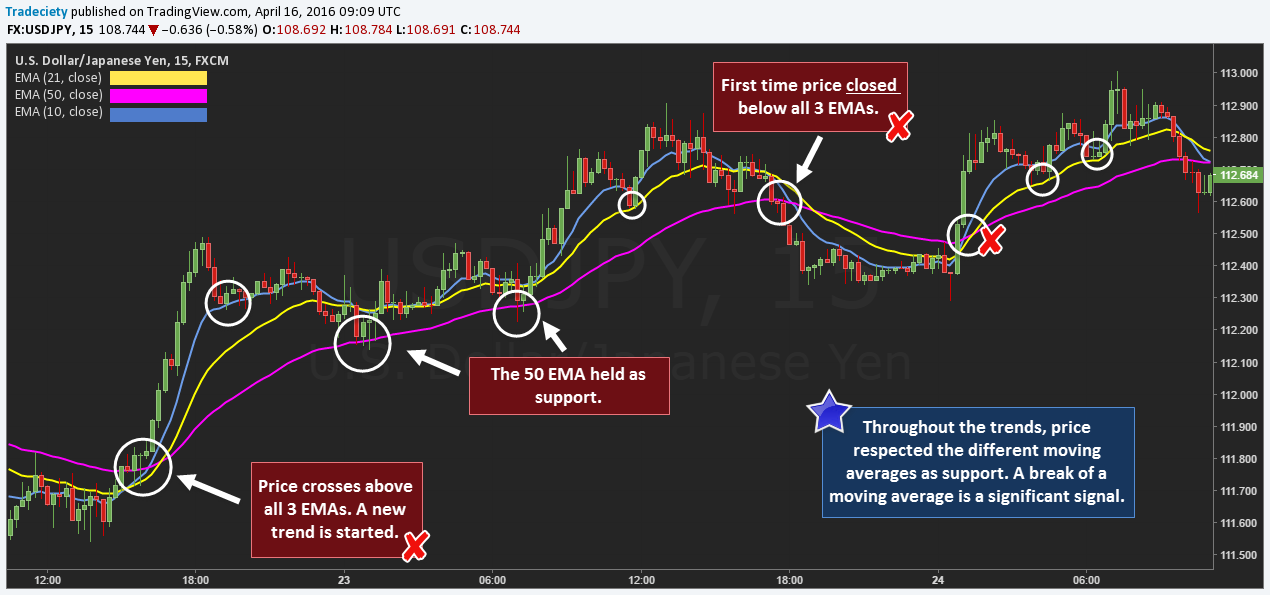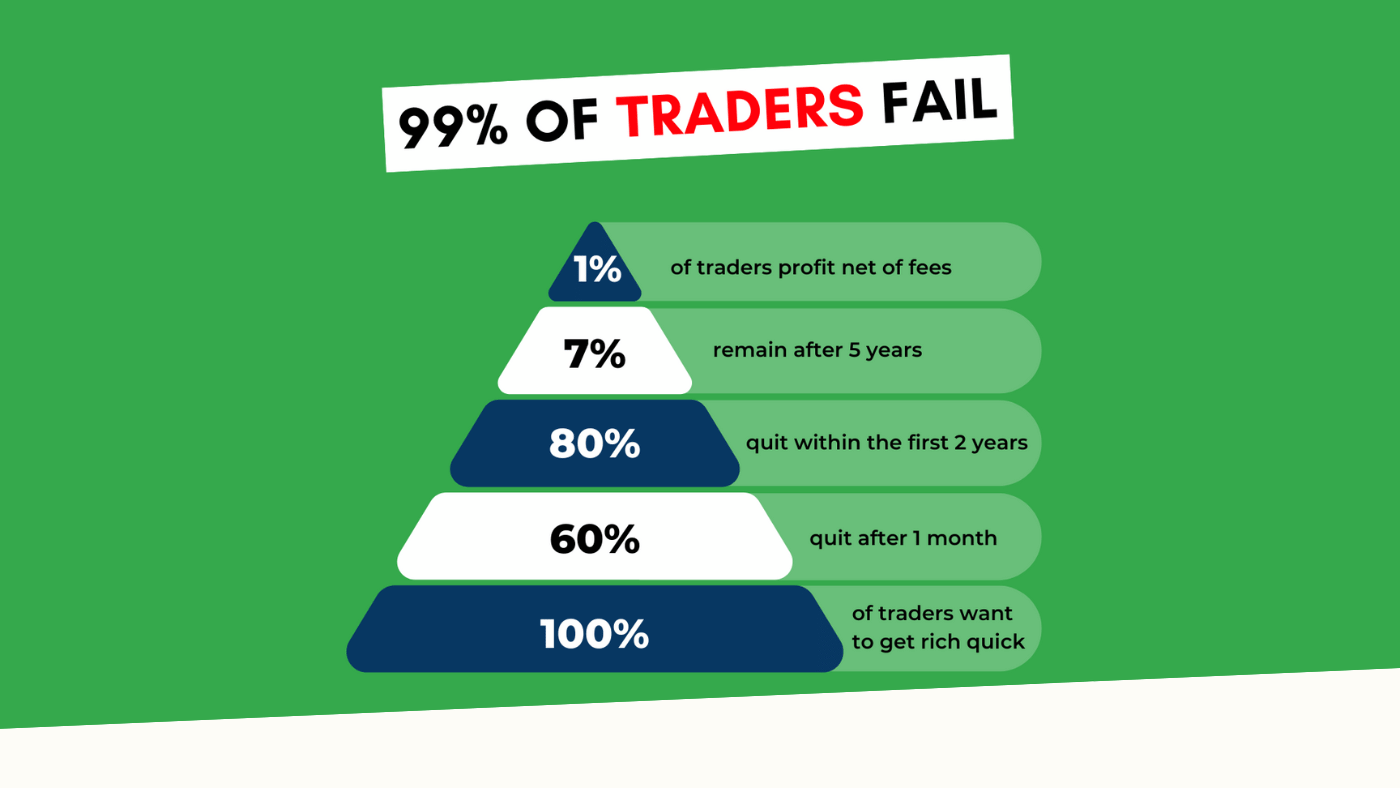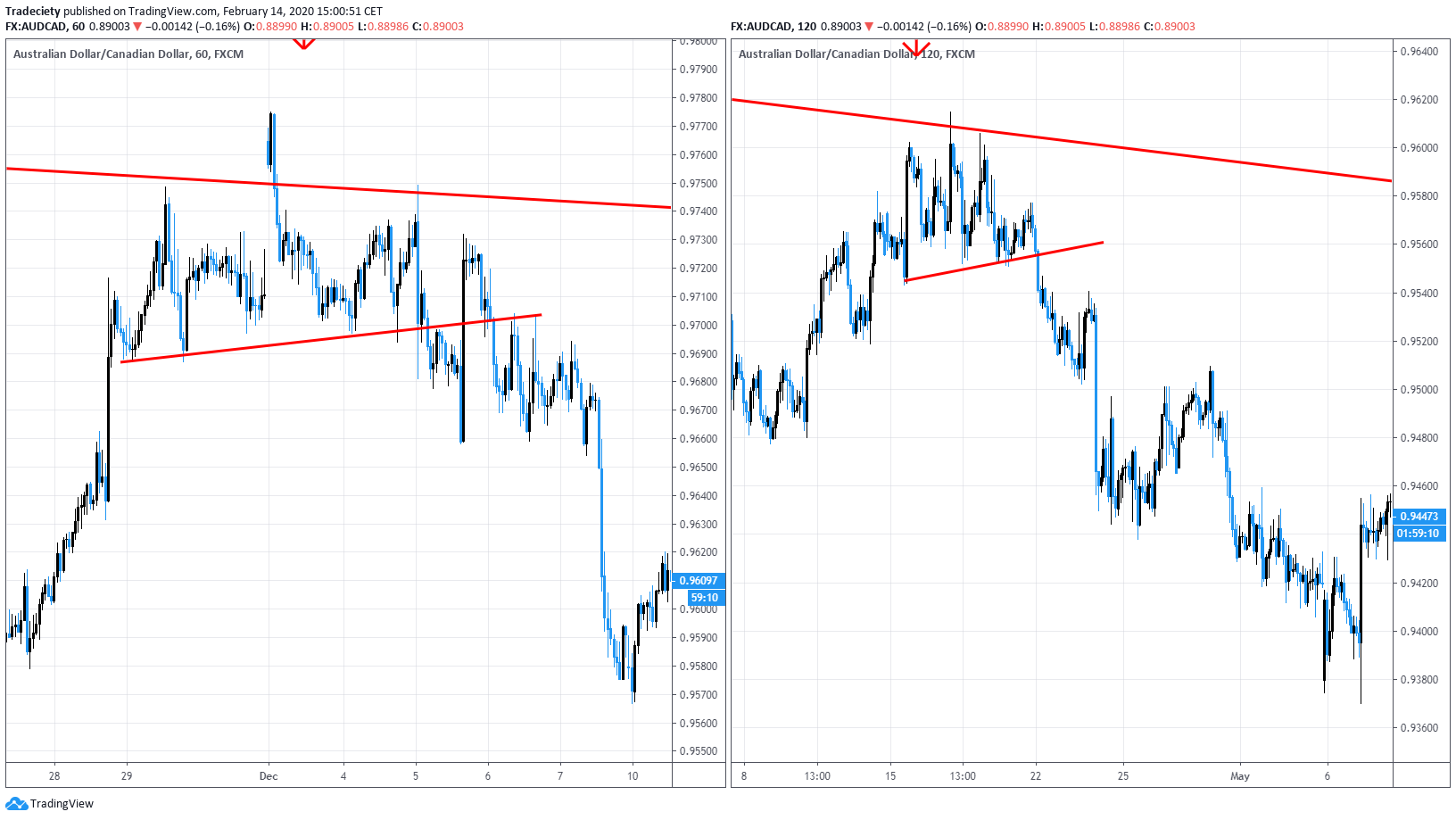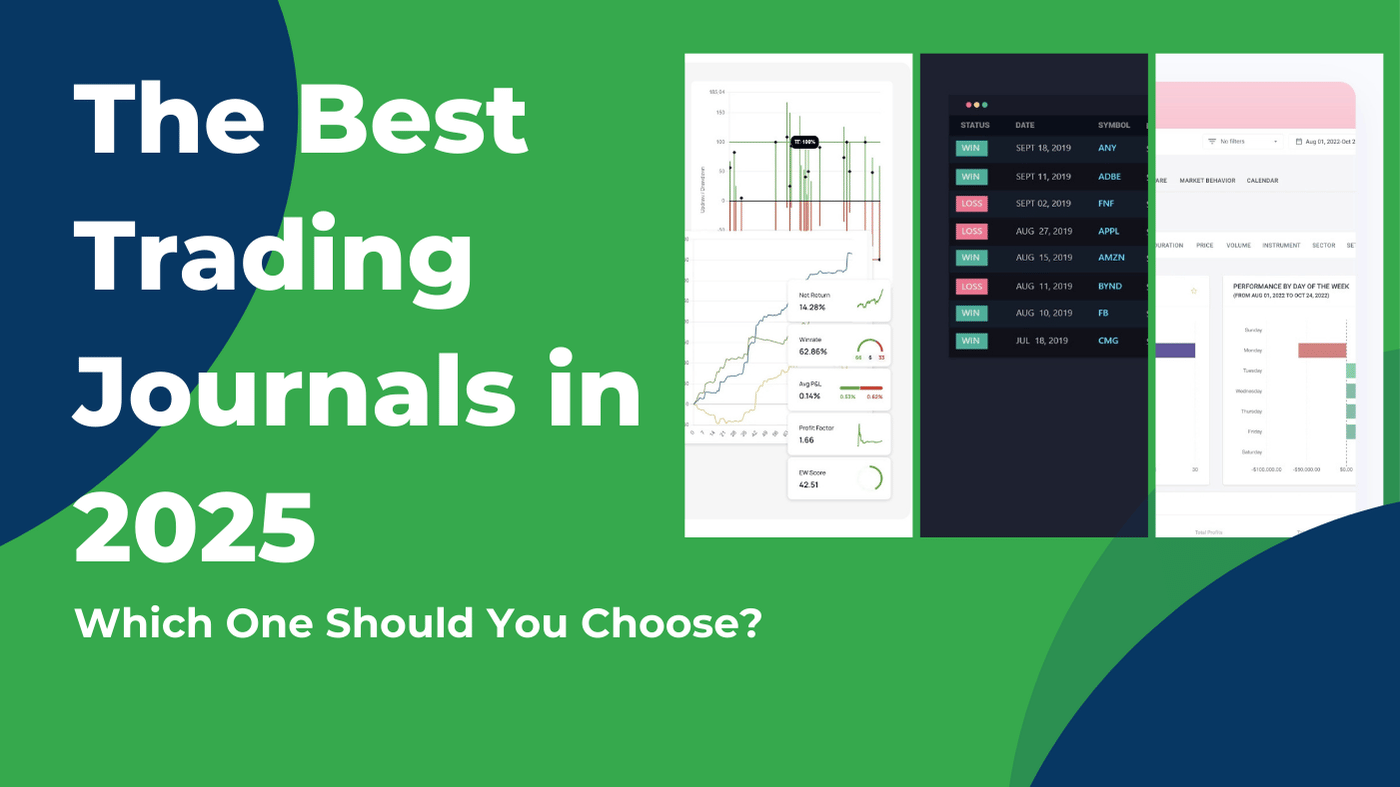3 min read
Scientist Discovered Why Most Traders Lose Money – 24 Surprising Statistics
“95% of all traders fail” is the most commonly used trading related statistic around the internet. But no research paper exists that proves this...

Price can be volatile at times and hard to read. That's where moving averages come in! They're a super popular trading indicator used by many of the best traders of all time, but using them right can be tricky. This article will cut through the confusion and show you exactly what you need to know. We'll cover picking the perfect moving average for your trades, and powerful ways to use them to make smarter decisions.
Let's clear up the EMA vs. SMA debate! Both are popular moving averages, but they react to price changes a little differently. Here's the breakdown to help you pick the right one for your trades:
There is only one difference when it comes to EMA vs. SMA and it’s speed. The EMA moves much faster and it changes its direction earlier than the SMA. The EMA gives more weight to the most recent price action which means that when the price changes its direction, the EMA recognizes this sooner, while the SMA takes longer to turn when the price turns.
There is no better or worse when it comes to EMA vs. SMA. The pros of the EMA are also its cons – let me explain what this means:
The EMA reacts faster when the price changes direction, but this also means that the EMA is more vulnerable when it comes to giving wrong signals too early. For example, when the price moves lower during a rally, the EMA will start turning down immediately and it can signal a change in the direction way too early.
The SMA moves much slower and it can keep you in trades longer when there are short-lived price movements and erratic behavior. But, of course, this also means that the SMA gets you in trades later than the EMA.
#3 Conclusion
In the end, it comes down to what you feel comfortable with and what your trading style is (see next points). The EMA gives you more frequent and earlier signals, but it also gives you more false and premature signals. The SMA provides fewer and later signals, but also fewer wrong signals during volatile times.
After choosing the type of moving average, traders ask themselves which period setting is the right one that gives them the best signals?!
There are two parts to this answer: first, you have to choose whether you are a swing or a day trader. And secondly, you have to be clear about the purpose and why you are using moving averages in the first place. Let’s go about this now:
More than anything, moving averages “work” because they are a self-fulfilling prophecy, which means that price action respects moving averages because so many traders use them in their trading. This raises a very important point when trading with indicators:
You have to stick to the most commonly used moving averages to get the best results. Moving averages work when a lot of traders use and act on their signals. Thus, go with the crowd and only use the popular moving averages.
When you are a short-term day trader, you need a moving average that is fast and reacts to price changes immediately. That’s why it’s usually best for day-traders to stick with EMAs.
When it comes to the period and the length, there are usually 3 specific moving averages you should think about using:
Swing traders have a very different approach and they typically trade on the higher time frames (4H, Daily +) and also hold trades for longer periods. Thus, swing-traders should first choose an SMA and also use higher period moving averages to filter out noise and premature signals. Here are 4 moving averages that are particularly important for swing traders:
Now that you know about the differences between the moving averages and how to choose the right period setting, we can take a look at the 3 ways moving averages can be used to help you find trades, ride trends, and exit trades reliably.
Market Wizard Marty Schwartz was one of the most successful traders ever and he was a big advocate of moving averages to identify the direction of the trend. Here is what he said about them:
“The 10 day exponential moving average (EMA) is my favorite indicator to determine the major trend. I call this “red light, green light” because it is imperative in trading to remain on the correct side of a moving average to give yourself the best probability of success. When you are trading above the 10 day, you have the green light, the market is in positive mode and you should be thinking buy. Conversely, trading below the average is a red light. The market is in a negative mode and you should be thinking sell.” – Marty Schwartz
Marty Schwartz uses a fast EMA to stay on the correct side of the market and to filter out trades in the wrong direction. Just this one tip can already make a huge difference in your trading when you only start trading with the trend in the right direction.
But even as a swing trader, you can use moving averages as directional filters. The Golden and Death Cross are signals that occur when the 200 and 50-period moving average cross and they are mainly used on the daily charts.
In the chart below, I marked the Golden and Death cross entries. You would enter short when the 50 crosses the 200 and enter long when the 50 crosses above the 200 period moving average. Although the screenshot only shows a limited data set, you can see that the moving average cross-overs can help your analysis and pick the right market direction.
The second thing moving averages can help you with is support and resistance trading and also stop placement. Because of the self-fulfilling prophecy we talked about earlier, you can often see that the popular moving averages work well as support and resistance levels.
Word of caution: Trend vs ranges
Moving averages don’t work in ranging markets. When the price ranges back and forth between support and resistance, the moving average is usually somewhere in the middle of that range and the price does not respect it that much.
The screenshot below shows a price chart with a 50 and 20 period moving average. You can see that during the range, moving averages completely lose their validity, but as soon as the price starts trending and swinging, they perfectly act as support and resistance again.
The Bollinger Bands are a technical indicator based on moving averages. In the middle of the Bollinger Bands, you find the 20 periods moving average and the outer Bands measure price volatility.
During ranges, the price fluctuates around the moving average, but the outer Bands are still very important. When the price touches the outer Bands during a range, it can often foreshadow the reversal in the opposite direction when it’s followed by a rejection. So, even though moving averages lose their validity during ranges, the Bollinger Bands are a great tool that still allows you to analyze prices effectively.
During trends, Bollinger Bands can help you stay in trades. During a strong trend, the price usually pulls away from its moving average, but it moves close to the Outer Band. When the price then breaks the moving average again, it can signal a change in direction. Furthermore, whenever you see a violation of the outer Band during a trend, it often foreshadows a retracement – however, it does NOT mean a reversal until the moving average has been broken.
You can see that moving averages are a multi-faceted tool that can be used in a variety of different ways. Once a trader understands the implications of EMA vs SMA, the importance of the self-fulfilling prophecy, and how to pick the right period setting, moving averages become an important tool in a trader’s toolbox.

3 min read
“95% of all traders fail” is the most commonly used trading related statistic around the internet. But no research paper exists that proves this...

3 min read
Trendlines can be great trading tools if used correctly and in this post, I am going to share three powerful trendline strategies with you.

3 min read
Choosing the right trading journal is essential for traders wanting to analyze performance, refine strategies, and improve consistency. In this...